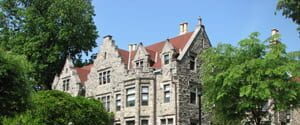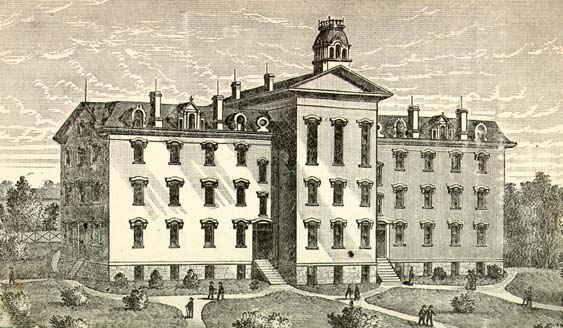Philadelphia Inquirer – April 21, 2013
While studying the Civil War, my students were surprised to discover that among its many consequences were the founding and expansion of hundreds of colleges and universities.
With Southern Democrats no longer in Congress following secession, Republicans easily passed the Morrill Land-Grant Act in 1862. Government land was granted to each state to be sold, and the moneys used to create endowments for the maintenance of colleges that would teach, among other things, agriculture and engineering in order to “promote the liberal and practical education of the industrial classes.”
The bill provided federal aid for a new, more inclusive vision of publicly supported higher education. Penn State, founded in 1855, became Pennsylvania’s land-grant college in 1863. Rutgers followed for New Jersey in 1864, and the University of Delaware was designated a land-grant college in 1867.
A host of black colleges emerged in the South after the war. Howard University, in Washington, began in 1866, like so many of its white counterparts, as a place to train clergymen but rapidly evolved into a university with a medical school and a law school. Freed from slavery by the war, a Georgian, William Sanders Scarborough, went on to become a classicist and later president of Wilberforce College in Ohio, one of the few historically black colleges founded before the war. More than a hundred so-called HBCUs continue to operate today, though many have struggled since desegregation, and a few are now majority white.
Former officers on both sides of the conflict joined college faculties. After the surrender, Robert E. Lee became president of Virginia’s Washington College, now known as Washington and Lee.
The federal budget leapt from 2 percent to 13 percent of gross domestic product during the war and fueled tremendous growth in Northern industry. Philadelphia textile mills supplied blankets and uniforms to the Union Army and, by the turn of the century, the city was the largest textile center in the country. A group of mill owners established the Philadelphia Textile School in 1884. It became a college in 1941, and was renamed Philadelphia University in 1999.
The second wife of Cornelius Vanderbilt, the New York shipping and railroad magnate, was a Southerner, and she persuaded her husband to take an interest in the former Confederacy. Vanderbilt paid for the building of Vanderbilt University (1873) in Nashville.
The most famous historically black women’s college, Spelman (1881) in Atlanta, was funded in part by John D. Rockefeller, the oil baron, who built his first refinery during the war. Spelman was named in honor of Rockefeller’s wife and her parents, who had been active in the abolitionist movement.
Today the United States is the world leader in higher education, with about 4,500 degree-granting institutions. Learning more about where these colleges and universities came from, and how they have evolved, might help students look beyond rankings and name recognition and take a broader view of their college options.


I have to confess I arched an eyebrow at the line “Today the United States is the world leader in higher education” but I guess it is if the yardstick is the number of institutions. Quality is terribly subjective, so it would be hard to define world leader in higher education any other way.
Either way, and to your point, I am firmly convinced that, while being at a ‘good’ school helps, what will define the student’s success is what they make of the experience or the place.
I think the U.S. is the world leader in higher ed despite the serious problems plaguing the system. It still contains an extraordinary range of institutions. Among them are many of the best teaching colleges in the world and many of the best research universities.
On the other hand, several countries are rapidly gaining ground and successfully competing for students in the global pool.
Your article was very interesting. You should write a book on the subject. I promise i’ll buy it, if you do.
I do not know if the political parties today represent similar thinking as during the “War of Northern Aggression” as some still say, but if Democrats were out of the picture nowadays in the North, like during the war, would we finally be able to sell today’s other public assets like State Stores, Gas Company, Convention Center, Parking Authority, Airport, and Highways similarly to the public lands sold back then for a better public good?
Good question for classroom debates since Democrats of today argue that all these things owned publicly give them patronage jobs to dole out, political power and control. Republicans argue against such public ownership because of the business inefficiency, waste, sloth and huge loss of profit revenue that would more fairly, equitably and honestly fund the social services needed by society if privately owned and managed without weakening and killing the golden goose.
That is an interesting idea. What I didn’t add about the Morrill Act is that the sale of the land grants involved a great deal of corruption and substantial portions of the moneys raised never ended up in the land grant college endowments where they were supposed to. So it goes.
Thank you for the informative and interesting lesson!
Hoping it’s a way to make the history “relevant,” a quality that everyone seems to think course work should have these days.
I knew about the expansion following WW2 and the GI Bill, but not the longer history.
Always nice to see FCS in the news…
The expansion of colleges and especially the state systems after WW2 was extraordinary and probably the other single biggest period of enrollment growth and also after a war.